State Of Grace
In May of this year, the 28-year-old British-Jamaican menswear designer Grace Wales Bonner landed in New York City and made a bold announcement: In the coming days, she would stage Devotional Sound, the second event in her celestial-music series, which would feature Solange and a handful of other artists at a Midtown church, exploring spirituality through music.
A less sophisticated designer might have put it more crassly: a semi-secret Solange concert in less than two days! But New York was primed to speak Wales Bonner's language. By the time news of the event was circulating, it seemed like everyone in the city's fashion, art, and literature communities was tuned in to Wales Bonner. Though the brand is four years old, the runway show the designer had staged in February was a revelation, as her mystical, minimalist clothing—a vision summoned mostly through track pants, sportswear, and tunics—reached a new level of refinement. It had that elusive fashion thing: You just looked at it and wanted to wear it. The New York Times called it “affecting and effective,” with its long tuxedo jackets “some of the most desirable pieces shown all week.” Vogue said the show “crystallized a moment that—in the face of all the negativity elsewhere in the world—felt like a real surge of hope and faith in all the talent and all the intelligence of a new generation of children of the African diaspora taking their place in Britain.” Plus, Naomi Campbell was in the front row. “Support for my island girl!” she said in an Instagram video.
That show, for her fall 2019 collection, thrust Wales Bonner into a much bigger spotlight. From the beginning, Wales Bonner has been known for her serious engagement with artists. But this past spring, she was suddenly doing a dizzying array of cross-disciplinary projects. She arrived in New York by way of Morocco, where she had guest-designed a look for one of Dior's epic, far-flung womenswear runway shows. And she'd stopped along the way to accept the British Fashion Council/Vogue Designer Fashion Fund award, which includes a prize of 200,000 pounds.
“Her clothes are fully realized,” wrote British Vogue editor in chief Edward Enninful. “Her influence extends far beyond fashion; not only does she have a growing ready-to-wear business, but what she's already done for culture would be impressive in someone twice her age.”
Later in the spring, Meghan Markle would appear in her first official portrait with Prince Harry and their newborn son wearing a sleeveless double-breasted Wales Bonner dress, the kind of garment that defines the Wales Bonner brand: at once regal and humble, with a serene otherworldliness.
So all the cool guys (and women) were ready to organize themselves around the cult of Wales Bonner. After all, no one else was bringing these friendly but disparate people together until the designer made them all stand in line (for Solange!): There was New York's own fashion darling Telfar Clemens next to dirtbag-left podcasters, and DeSe Escobar, the artist-slash-hostess who runs Glam, Chinatown's millennial reinvention of the '90s club-kid scene, standing near Eileen Myles. The audience was as intriguing as the concert lineup.
Ade Odunlami, the DJ better known as Acyde, put it perfectly on his Instagram, sending Wales Bonner love “for curating this heavyweight gathering. It's going to be a beautiful night.”
Meanwhile, inside, Wales Bonner seemed supernaturally relaxed. “For me it's just about being able to be present in this moment,” she said. It was about an hour before the show's first set, by Laraaji, the mystic instrumentalist who electrified the zither and was discovered by Brian Eno in Washington Square Park in the late '70s. “I find it very healing and very energizing, so it's almost creating a safe environment to relax and to enjoy that.”
Wales Bonner was wearing a pair of black pants with a blue collarless tunic-length button-up and cow-print fur slides, all her own (she creates a handful of women's pieces each season); the shoes are a collaboration with Manolo Blahnik. The venue, Saint Peter's Church, is a cool, modern space that gained a reputation in the '60s for its Jazz Vespers services, which featured John Coltrane, Duke Ellington, and Thelonious Monk—credentials Wales Bonner loved. On this night, the place was buzzing yet tranquil. Wales Bonner said she hadn't even seen the space until earlier that day. Gio Escobar, from the group Standing On the Corner, which was also performing that night, had scouted it for her. She handed Laraaji some fruit—slices of tangerine that matched the layers of his robe. Every few minutes, someone would appear with incense and wave it around; it was unclear who was instructing anyone to do what they were so diligently doing, but by the time the hundreds of attendees who'd managed to score the limited tickets got in, the interior smelled like actual paradise, leafy and cedary, with a floral tenderness. It was a very hip scene for New York, where spirituality, lately, is more of a marketing term.
Solange took the stage later in the evening, backed by a sprawling funk band and oozing out the lyric taking on the light from a track on her most recent album, When I Get Home, over and over, across a 40ish-minute set. Solange is one of the world's most private pop stars, and while the new album had pushed her far-out vibe to a more abstract place, this set seemed like an even more secretive side of her practice. A further testament to the cult of Wales Bonner: She made us feel like we were in Solange's creative inner circle.
During Solange's performance, Wales Bonner reappeared, her shirt replaced by a white shantung Dior bar jacket. She stood on the edge of a small square pool in the middle of the church's stadium-style pews. Physical extremity often adds to the sense that a person is somehow prophetic—their unusual proportions or features a sign from a higher power—and Wales Bonner is very petite, and she wears no makeup, and she has huge eyes and an intense gaze. The silk of her jacket glowed. Here was the messenger appearing before the shepherds.
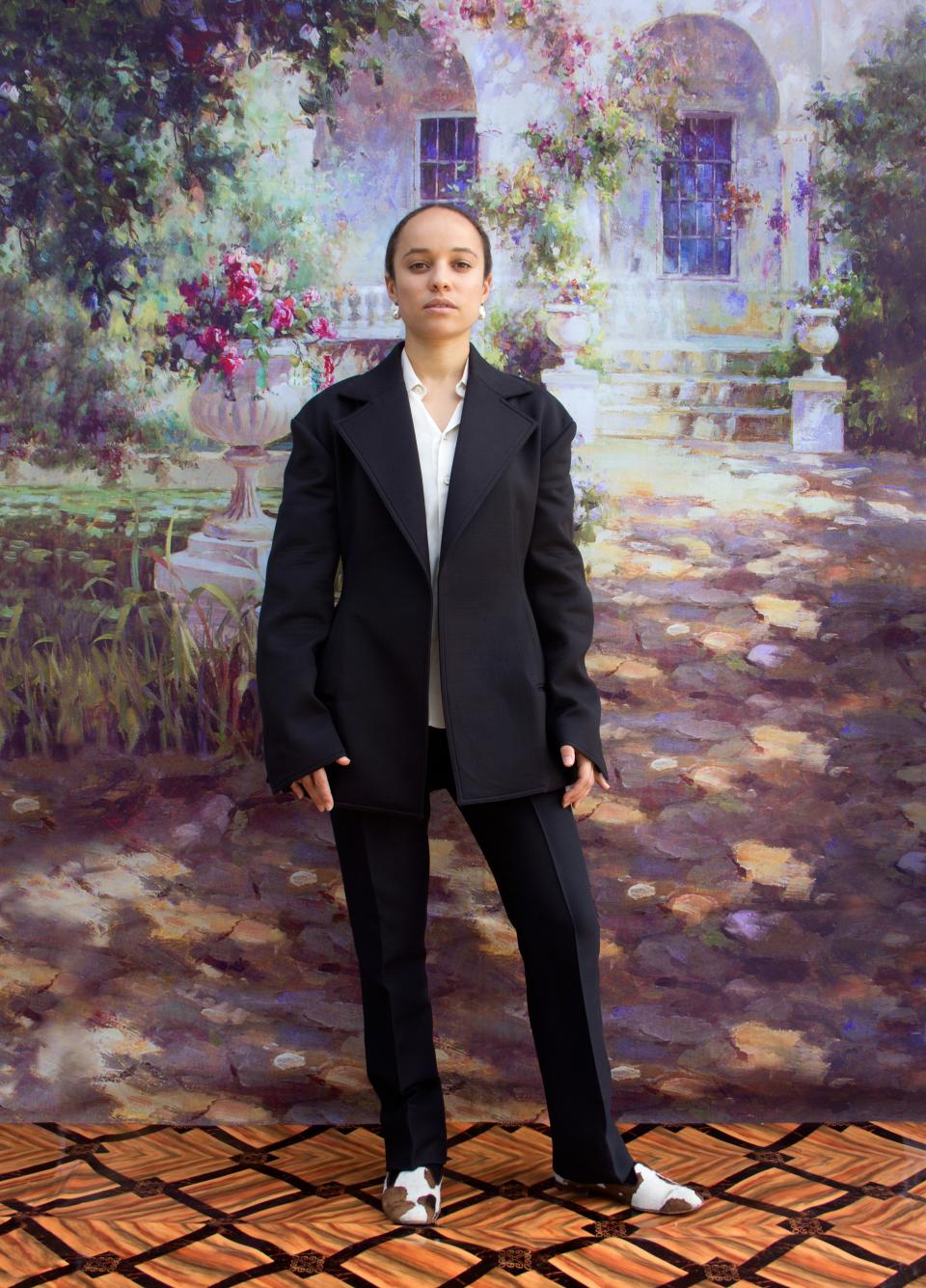
“I feel a responsibility to handle references in a specific way and represent black culture. And I have an awareness of the people that have come before me.”
The day after the concert, Wales Bonner and I met up at the Frieze New York art fair, where she was giving a talk about her spring 2019 collection. This event was also packed with cool kids from art, fashion, and media. She was wearing the same combination—black pants, a blue tunic top, and cow-print shoes (uniform dressing, however ironically, is taken as a certain mark of genius among many fashion designers).
Despite being a world-class gatherer of people, Wales Bonner is introverted—quiet and serious. She doesn't swan around a room making connections. After we'd wandered Frieze together for about 30 minutes, she turned to me and said, not impatiently, “Do you have more questions?” She is not the hostess. She is the priestess.
She can even be guarded, considering the ambition of her work is a sense of global connectedness. It creates relationships between, say, the color symbolism of Yoruba religions and traditional American textiles. But when I asked her about the role of religion and spirituality in her work, she demurred, picking through her words, eventually telling me, “I guess it's something that's always been in my life.”
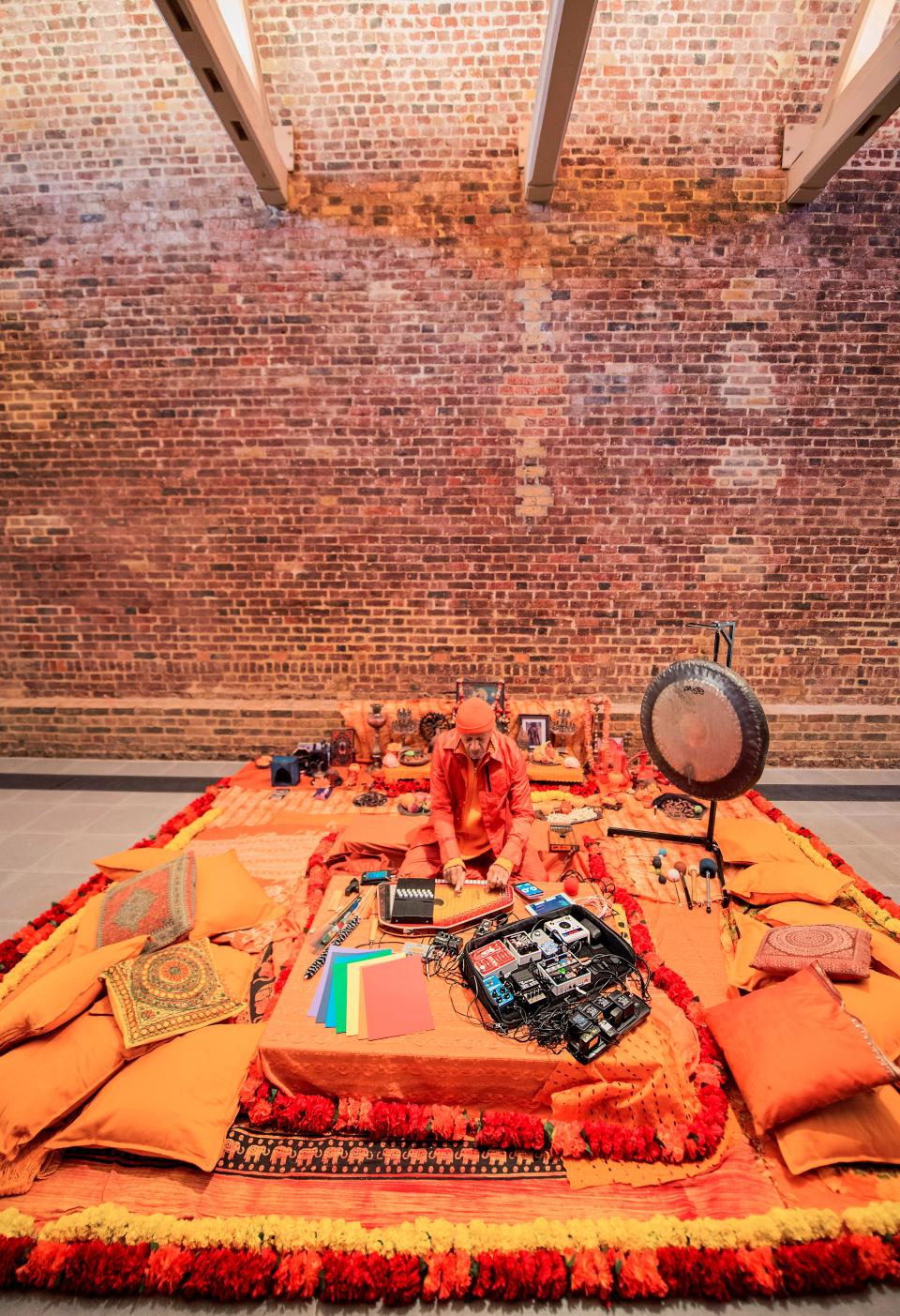
RDDJH3
When I called Ishmael Reed—the great African-American poet and satirist, and Wales Bonner's friend and collaborator—he suggested that her shyness and that sense of spiritual intuition come from her multicultural background: She was born to a black Jamaican father and a white English mother, in southeast London, one of the city's most racially diverse neighborhoods. “I think bicoastal or biracial people have almost like second sight,” Reed said. “They're able to see both sides. She's able to take advantage of her Jamaican heritage and also her English heritage.”
But her introversion doesn't suggest a hesitance to engage with others. In fact, her desire to work with designers, artists, musicians, and writers seems to be the creative impulse that propels her. This cooperative approach was born out of a realization she came to at an artist residency in 2015, during which she found herself very isolated: “I realized that what I need to create is other people, and I thrive through being with other people.” So, she says, she became “quite a lot more proactive” about contacting creators whose work she admires. Indeed, sometimes the list of her partners, muses, and participants sprawls to an almost absurd length. The starting point of her fall 2019 collection, for example, was Reed's 1972 novel, Mumbo Jumbo, “which is about a dance epidemic taking place in the United States—at least that's what it's about on the surface,” Reed said. Wales Bonner put his name on a tunic-like baseball jersey, but his emphasis on mysticism was also evident in the collection's brooches and feathers, which clung like talismans to those beloved tuxedo jackets. There was also a “St. James” varsity-style motif that ran through the collection—a reverie imagining a group of Howard University students in thrall to the outsider artist James Hampton, who made a monumental assemblage of religious artifacts in a Washington, D.C., garage.
But that collaborative ethos—and her proclivity to take inspiration from others—wasn't merely present in the clothes. She staged the show in London's Serpentine Sackler Gallery, where she had simultaneously mounted the exhibition A Time for New Dreams, named for the 2011 essay collection by Ben Okri. The exhibition included works from such artists as Paul Mpagi Sepuya, Eric N. Mack, and David Hammons. Mack also made kimonos for the show, Okri read a poem, and Reed “ended up playing the piano accompanying the fashion walk, which was unexpected!” he said. “So I can tell my grandchildren that Naomi Campbell did an Instagram [story] of my playing the piano,” he added, laughing.
Fashion designers have collaborated with artists since Elsa Schiaparelli was having coffee and sketching jackets with Jean Cocteau. But more recently the promiscuity between the two industries has grown more superficial, perhaps as both become more at ease with their capitalist impulses. The connection too often serves as a seal for intellectual credibility on the part of the designer and simplistic commercialism on the part of the artist. But Wales Bonner doesn't reach for the blue-chip names; her partners aren't usually the artists you see working even with younger fashion brands. Sepuya and Mack, for example, are close to Wales Bonner's age, only at the beginning of their careers. She is not just choosing collaborators to work with, but building a community, a loosely codified gathering of her generation's most significant artists, many of whom are creators of color. They put their work and ideas together in conversation, pushing themselves into something new—like Solange onstage at the Devotional Sound concert, twisting her meditative pop music into astral jazz. And in situating artists from her own generation alongside their forebears, like Reed and Okri, she canonizes them with the pop-cultural flourish that fashion alone is capable of.
As for how she knows them all, again, she's a little reserved: “I feel like all these creative circles are just quite naturally connected.” (So if you've ever wondered if all the cool people are hanging out without you…they are.)
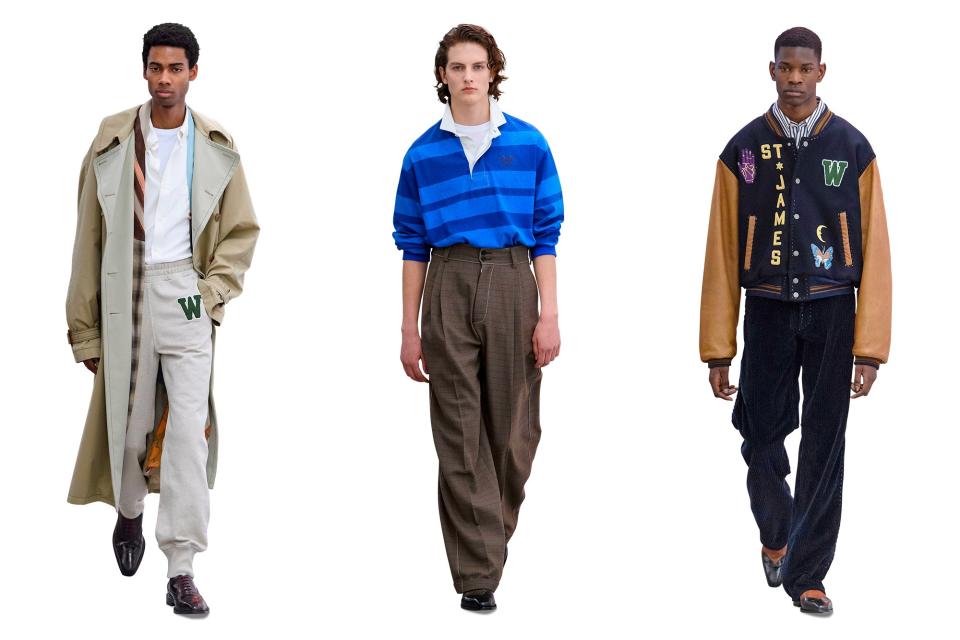
Wales Bonner's work seems serious, and that's because it is. “I feel a responsibility, in a sense, of handling references in a specific way and representing black culture,” she said. “And also I have an awareness of the kind of history, and the artists, people that have come before me and the kind of lineage that I'm connecting to. That is something that I'm drawing from in the way that I create.
“But I'd also like to think that there can be a playfulness about my approach, especially some earlier collections—I'd like to think that there's a playfulness or a disruption around the creative process,” she said. “And I also think collaborating is something that allows for that kind of disruption as well.” She prefers to work with people who intimidate her: “I feel like it forces me to step up to meet them in some ways. Working with artists that I really admire challenges me.”
Speaking of which, there was the Dior show in Morocco. Wales Bonner, whose sales footprint is not large—the brand is sold in specialty stores like Ssense and Union, as well as in larger retailers like Matches and Browns, her local London luxury shop—somehow ended up designing a look for one of the biggest fashion brands on the planet. In fact, Dior's womenswear artistic director, Maria Grazia Chiuri, found Wales Bonner through their mutual art-world connections. “I first got in touch with Grace after seeing her exhibition at the Serpentine Sackler Gallery in London, A Time for New Dreams,” Maria Grazia wrote via email. “I was fascinated by her multifaceted persona.” So she invited her to create an interpretation of the New Look, perhaps the most significant silhouette in women's fashion over the past century, introduced by Christian Dior in 1947—lustrous expanses of fabrics, with corseted waists and blooming skirts that reinvigorated fashion after its post-World War II slump.
“I wanted to share the platform of being the creative director of Dior with other young and contemporary artists,” wrote Maria Grazia, who called on other artists, such as Mickaelene Thomas, for collaborations. “I wanted the [resort] show to mark the beginning of a creative dialogue across cultural boundaries. I was also fascinated by her use of rituals and cultural traditions as an aesthetic. I was curious to see how she would construct her point of view in collaboration with a French maison.” Wales Bonner slightly relaxed the hourglass shape, deflating the couturier seriousness of the shoulders and the skirt ever so slightly and adding raffia stripes and trimming that recall Caribbean handcraft. In its excess and unabashed deference to beauty over practicality, the New Look's opulence was meant to make a splash that almost superseded taste. But Maria Grazia and Wales Bonner put more global influences, more cultures, into Christian Dior's historically complex look—and somehow it looked more peaceful.
Wales Bonner was modest about the whole thing: “It's obviously very rewarding to be able to create with such incredible resources.”
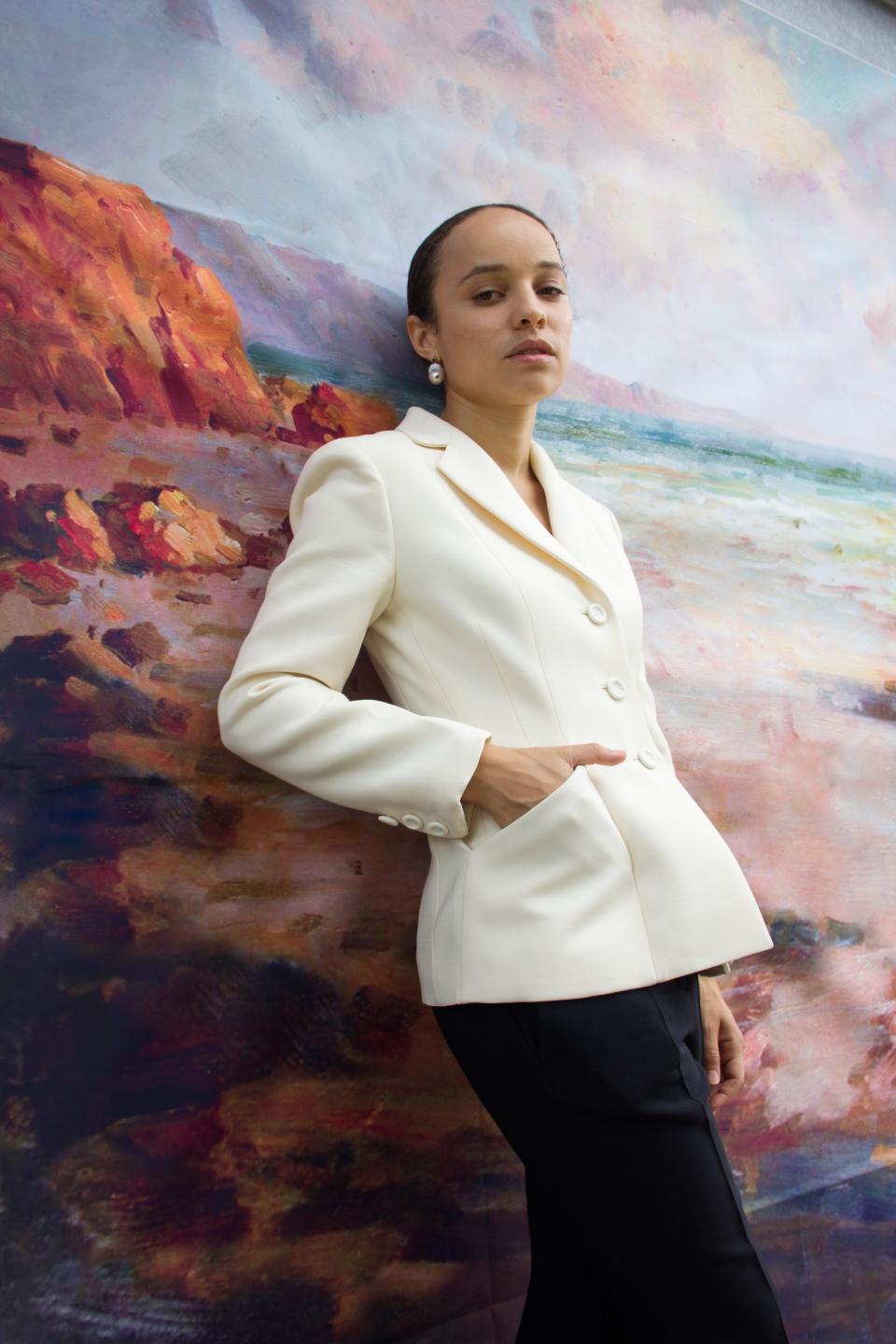
“I feel you can understand an intention, an environment, a character, immediately through clothing. I find it a quite strong vehicle to express my ideas.”
It seems doubtful that Wales Bonner could pull all of this off if the clothing weren't so good. Wales Bonner's shows always come with a wealth of reading material outlining her multiplicity of collaborators and influences, and yet her clothing is not pedantic. “I want to create beautiful pieces, and then there is a story behind how I got to that point of creation,” she explained. “And if people want to access it, there is a trail of how they can access it, but it's not necessarily contingent.” It's what she calls her “research process.”
In part it's because her clothing is so telegraphic, so immediate—which answers the question likely lingering in your mind as to why she's making clothes instead of paintings or sculptures. In her final year at the prestigious Central St. Martins art and design college in London—she graduated in 2014—she was simultaneously writing a dissertation on representation and blaxploitation and creating her fashion-thesis collection. “In the end, I presented this collection that was subconsciously very influenced by theory,” she said. “And there was quite a strong reaction to that collection, and I realized that you can communicate very immediately through clothing.”
That thesis collection garnered acclaim, including the L'Oréal Professional Talent Award, the top academic prize in Central Saint Martins's fashion school. She interned for Meadham Kirchhoff, the critically beloved funky and now defunct British label, and worked as an assistant to American Vogue editor Camilla Nickerson. The year after she graduated, she launched her brand with the young-designer incubator Fashion East. Fashion, she said, “became a natural vessel for me to explore ideas and representations within an immediate format, because I think that writing is not as accessible in terms of communication, and I feel like you can understand an intention, an environment, a character, immediately through clothing.… I found it a quite strong and powerful vehicle to express my ideas.”
There are so many dense references and personalities in the fall 2019 collection; it is apparent that the clothing is her mostly finely honed version of a vision that's been remarkably consistent since her first collection, four years ago. At its core, it's sweatpants and blazers, varsity jackets, high-waisted khaki slacks, corduroy pants, puffers, and tunics. But the sleeves are longer, the trousers loose but cleanly tailored, the shoulder dropped a little to expand the proportions. Wales Bonner's men look lovely. “I'm quite interested in minimalism and purity and form,” she said, explaining that she'd been particularly drawn to the kind of minimalism she'd found in the Dior archives: “It was very emotional and seductive.”
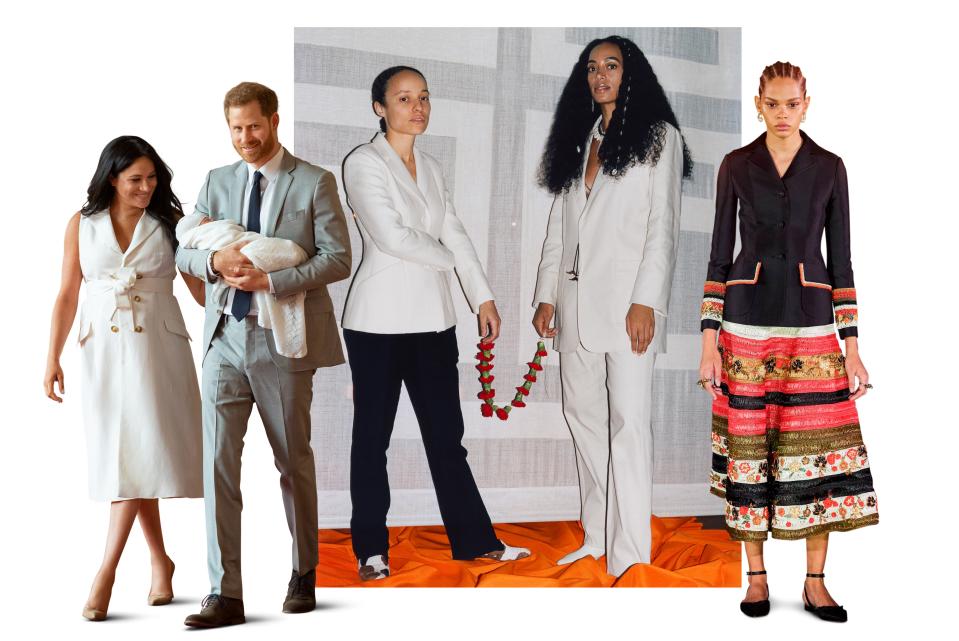
Minimalism is often thought to be more complex, intellectually, than the mere dazzle of maximalism—it's a visual vocabulary in which forms are pared down to a laconic code that's inscrutable unless you're also familiar with the corresponding ideas and context of the time. We know Donald Judd's apartment looks serene, for example, but there's also something untouchable, enigmatic about it. Wales Bonner comes with reading material, of course, but there's an innate, intuitive appeal to her clothing, to those easy forms and the fluid shapes, that needs no textural interpretation: It's just beautiful.
Wales Bonner's garments are essentially vernacular (the rugby shirt, sweatpants, trench coat), but her diverse casting and reticent use of accessories—like talisman brooches, cowrie shells, and feathers—give her familiar forms a more profound, globalist flavor. As Reed put it, “When blacks wear clothes, even when they might be derived from European models, they put their own English on it. You know, we put our own style on wearing clothes.” And, he said, “I think she's very aware of this.”
That awareness seems evident in her show casting. She doesn't consider herself a “political” designer, nor does she really think about the optics or implications of being a woman designing for men. Almost all of her models are men and women of color, many of them black, all of them with a range of skin tones. And while the menswear runway model over the past few years has been a more vulnerable image of masculinity overall, there is a sensitivity to her men, perhaps best embodied by Wilson Oryema, a writer, activist, and model. Wales Bonner met Oryema shortly after he started modeling, and he became something of a muse to the designer. When she first launched her brand, he wrote in an email, “there was a massive void in conversations and expectations between Europeans of what ‘black’ masculinity could be. Grace's vision to bring many different expressions of what we call ‘blackness’ together has been very encouraging.”
“I'm interested in purity in some way, in relation to beauty,” she said. “And it's quite subtle, what I do. It's quite precise. It's about decision-making and trying to refine things to a certain level.”
That's the gravity of what Wales Bonner does, really, above and beyond her many projects in the art and fashion world. Where else, outside of fashion, do you see an ongoing conversation about and exploration of male beauty?
“She's a genius,” Ishmael Reed said, “and being a genius is like being a unicorn surrounded by tigers. Everybody's out to get you.”
We were talking about what Wales Bonner might do next. It's a complex time for a woman to make menswear, and for any fashion designer to explore black masculinity in particular. But Wales Bonner doesn't think about designing for the moment. She's not thinking about becoming the head of a larger legacy brand, which is often considered the career-making move for a young designer. “I'm not really in a rush,” she told me.
She is thinking on a more divine scale. “It's almost like I'm trying to create something that's timeless,” she said, “that can exist in any moment in time—it could have been found 100 years ago.”
Still, I wondered how someone so cerebral about every element of her work could claim to create untethered to the moment in which she lives, which is one of history's ugliest. “I'm definitely more self-motivated,” she said. “But of course, you have to be aware of what's happening in culture, and I've gone about that in my own way. So I think that you have to reflect the time. And I do feel like there's a need for beauty.”
Rachel Tashjian is a GQ staff writer.
A version of this story appears in the Fall 2019 issue of GQ Style with the title “State Of Grace.”
PRODUCTION CREDITS:
Photographs by Ruth Ossai
Hair and makeup by Kentaro Kondo at Eighteen Management
Produced by Mascioni Associati International Ltd.
Originally Appeared on GQ

